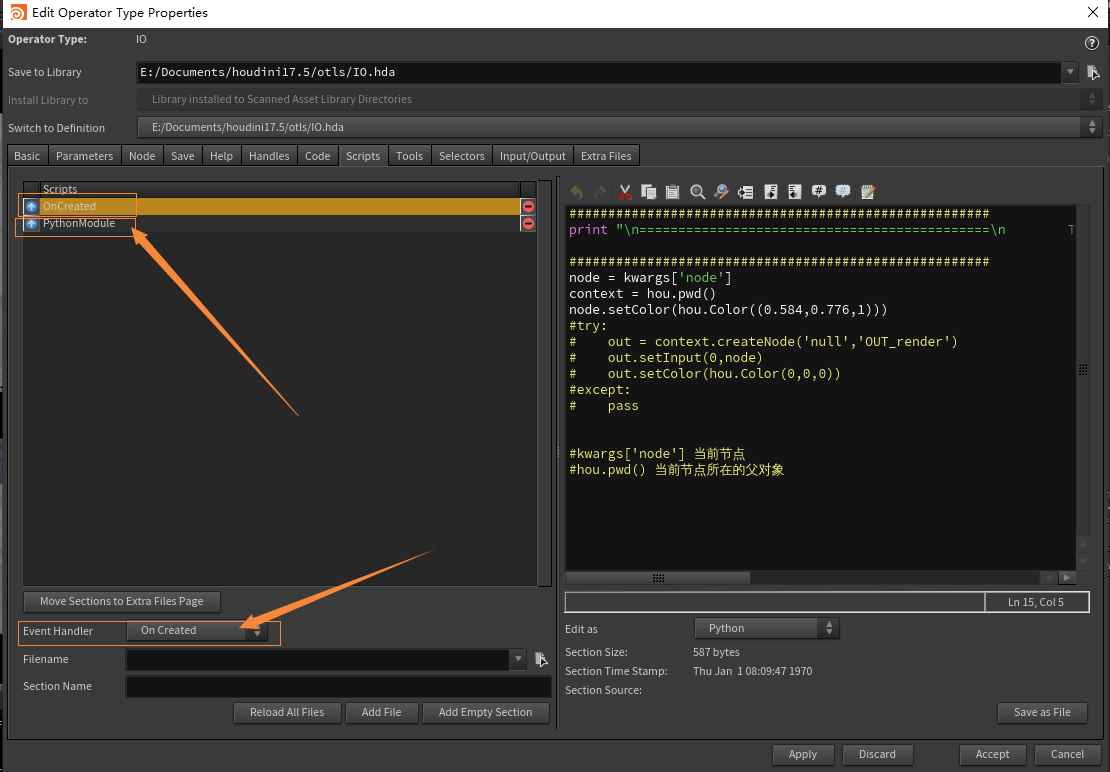python使用__slots__让你的代码更加节省内存
前言
在默认情况下,Python的新类和旧类的实例都有一个字典来存储属性值。这对于那些没有实例属性的对象来说太浪费空间了,当需要创建大量实例的时候,这个问题变得尤为突出。
因此这种默认的做法可以通过在新式类中定义了一个__slots__属性从而得到了解决。__slots__声明中包含若干实例变量,并为每个实例预留恰好足够的空间来保存每个变量,因此没有为每个实例都创建一个字典,从而节省空间。
本文主要介绍了关于python使用__slots__让你的代码更加节省内存的相关内容,分享出来供大家参考学习,下面话不多说了,来一起看看详细的介绍吧
现在来说说python中dict为什么比list浪费内存?
和list相比,dict 查找和插入的速度极快,不会随着key的增加而增加;dict需要占用大量的内存,内存浪费多。
而list查找和插入的时间随着元素的增加而增加;占用空间小,浪费的内存很少。
python解释器是Cpython,这两个数据结构应该对应C的哈希表和数组。因为哈希表需要额外内存记录映射关系,而数组只需要通过索引就能计算出下一个节点的位置,所以哈希表占用的内存比数组大,也就是dict比list占用的内存更大。
如果想更加详细了解,可以查看C的源代码。python官方链接:https://www.python.org/downloads/source/
如下代码是我从python官方截取的代码片段:
List 源码:
typedef struct {
PyObject_VAR_HEAD
/* Vector of pointers to list elements. list[0] is ob_item[0], etc. */
PyObject **ob_item;
/* ob_item contains space for 'allocated' elements. The number
* currently in use is ob_size.
* Invariants:
* 0 <= ob_size <= allocated
* len(list) == ob_size
* ob_item == NULL implies ob_size == allocated == 0
* list.sort() temporarily sets allocated to -1 to detect mutations.
*
* Items must normally not be NULL, except during construction when
* the list is not yet visible outside the function that builds it.
*/
Py_ssize_t allocated;
} PyListObject;
Dict源码:
/* PyDict_MINSIZE is the minimum size of a dictionary. This many slots are
* allocated directly in the dict object (in the ma_smalltable member).
* It must be a power of 2, and at least 4. 8 allows dicts with no more
* than 5 active entries to live in ma_smalltable (and so avoid an
* additional malloc); instrumentation suggested this suffices for the
* majority of dicts (consisting mostly of usually-small instance dicts and
* usually-small dicts created to pass keyword arguments).
*/
#define PyDict_MINSIZE 8
typedef struct {
/* Cached hash code of me_key. Note that hash codes are C longs.
* We have to use Py_ssize_t instead because dict_popitem() abuses
* me_hash to hold a search finger.
*/
Py_ssize_t me_hash;
PyObject *me_key;
PyObject *me_value;
} PyDictEntry;
/*
To ensure the lookup algorithm terminates, there must be at least one Unused
slot (NULL key) in the table.
The value ma_fill is the number of non-NULL keys (sum of Active and Dummy);
ma_used is the number of non-NULL, non-dummy keys (== the number of non-NULL
values == the number of Active items).
To avoid slowing down lookups on a near-full table, we resize the table when
it's two-thirds full.
*/
typedef struct _dictobject PyDictObject;
struct _dictobject {
PyObject_HEAD
Py_ssize_t ma_fill; /* # Active + # Dummy */
Py_ssize_t ma_used; /* # Active */
/* The table contains ma_mask + 1 slots, and that's a power of 2.
* We store the mask instead of the size because the mask is more
* frequently needed.
*/
Py_ssize_t ma_mask;
/* ma_table points to ma_smalltable for small tables, else to
* additional malloc'ed memory. ma_table is never NULL! This rule
* saves repeated runtime null-tests in the workhorse getitem and
* setitem calls.
*/
PyDictEntry *ma_table;
PyDictEntry *(*ma_lookup)(PyDictObject *mp, PyObject *key, long hash);
PyDictEntry ma_smalltable[PyDict_MINSIZE];
};
PyObject_HEAD 源码:
#ifdef Py_TRACE_REFS /* Define pointers to support a doubly-linked list of all live heap objects. */ #define _PyObject_HEAD_EXTRA \ struct _object *_ob_next; \ struct _object *_ob_prev; #define _PyObject_EXTRA_INIT 0, 0, #else #define _PyObject_HEAD_EXTRA #define _PyObject_EXTRA_INIT #endif /* PyObject_HEAD defines the initial segment of every PyObject. */ #define PyObject_HEAD \ _PyObject_HEAD_EXTRA \ Py_ssize_t ob_refcnt; \ struct _typeobject *ob_type;
PyObject_VAR_HEAD 源码:
/* PyObject_VAR_HEAD defines the initial segment of all variable-size * container objects. These end with a declaration of an array with 1 * element, but enough space is malloc'ed so that the array actually * has room for ob_size elements. Note that ob_size is an element count, * not necessarily a byte count. */ #define PyObject_VAR_HEAD \ PyObject_HEAD \ Py_ssize_t ob_size; /* Number of items in variable part */
现在知道了dict为什么比list 占用的内存空间更大。接下来如何让你的类更加的节省内存。
其实有两种解决方案:
第一种是使用__slots__ ;另外一种是使用Collection.namedtuple 实现。
首先用标准的方式写一个类:
#!/usr/bin/env python class Foobar(object): def __init__(self, x): self.x = x @profile def main(): f = [Foobar(42) for i in range(1000000)] if __name__ == "__main__": main()
然后,创建一个类Foobar(),然后实例化100W次。通过@profile查看内存使用情况。
运行结果:

该代码共使用了372M内存。
接下来通过__slots__代码实现该代码:
#!/usr/bin/env python class Foobar(object): __slots__ = 'x' def __init__(self, x): self.x = x @profile def main(): f = [Foobar(42) for i in range(1000000)] if __name__ == "__main__": main()
运行结果:

使用__slots__使用了91M内存,比使用__dict__存储属性值节省了4倍。
其实使用collection模块的namedtuple也可以实现__slots__相同的功能。namedtuple其实就是继承自tuple,同时也因为__slots__的值被设置成了一个空tuple以避免创建__dict__。
看看collection是如何实现的:

collection 和普通创建类方式相比,也节省了不少的内存。所在在确定类的属性值固定的情况下,可以使用__slots__方式对内存进行优化。但是这项技术不应该被滥用于静态类或者其他类似场合,那不是python程序的精神所在。
总结
以上就是这篇文章的全部内容了,希望本文的内容对大家的学习或者工作具有一定的参考学习价值,如果有疑问大家可以留言交流,谢谢大家对【听图阁-专注于Python设计】的支持。



